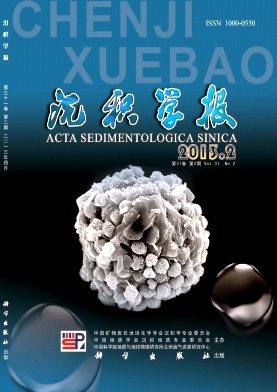Color Reflectance Record of the Yangtze River Mud Area Sediments during the Past 100 yr and Its Implications for East Asian Monsoon Variation
- Publish Date: 2013-04-10
-
Key words:
- Yangtze River estuary /
- mud area /
- sediment /
- color reflectance /
- East Asian Monsoon
Abstract: The continental shelf mud areas over the East China Sea were formed from the midHolocene, and are regarded as important places to study regional responses to global climate change due to their high sedimentation rate, which provide continual and rich record of environmental information. In this paper, the Minolta CM2002 spectrophotometer was used to measure the color reflectance data of sediments in Core MZ11, which was taken from the Yangtze River mud area. Based on the factor analysis using 400~700 nm color reflectance dada, the parameters such as F1, F2, brightness, redness and yellowness were summarized. By contrast with these curves, the results show that factor 1 and brightness show similar fluctuation patterns, while factor 2 and yellowness show complete contrary trend, so we can draw a conclusion that brightness and yellowness are the main factor to control the color composition of the sediment in core MZ11. The mud area near the Yangtze River estuary was believed to have been formed by finegrained sediments from the Yangtze River, which was influenced by the Eastern Asian Monsoon obviously, so by comparing with the historic record of the climate and the sediment brightness, we found the brightness could be a good proxy to monitor paleoclimatic changes in the study area and a time series analysis of the factor F1 and brightness indicate that relative high values in the past 100 yr occurred in 1887a, 1897a, 1904a, 1915a, 1936a, 1945a, 1953a, 1965a, 1977a, 1987a and 1992a, which may correlate with the abnormally strong summer monsoon events, suggesting that the tropical ocean had a major effect on the East Asian summer monsoon. Periodicities of 28 yr and 2 yr are observed in the color reflectance records coinciding with those known for solar cycles in the past 100 yr might be resulted from changes in solar activity.
| Citation: | Color Reflectance Record of the Yangtze River Mud Area Sediments during the Past 100 yr and Its Implications for East Asian Monsoon Variation[J]. Acta Sedimentologica Sinica, 2013, 31(2): 331-339. |






 DownLoad:
DownLoad: